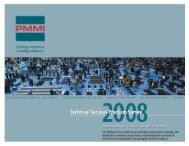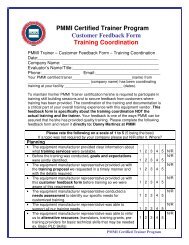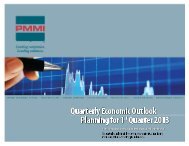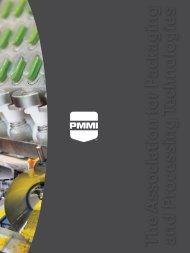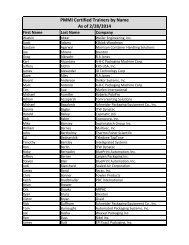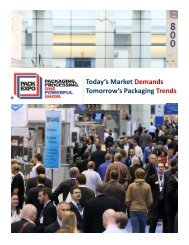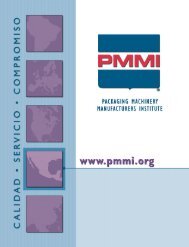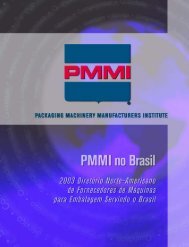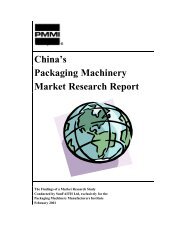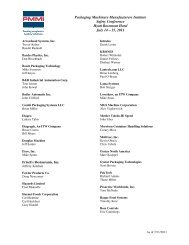Germany Packaging Machinery Market Research Report - PMMI
Germany Packaging Machinery Market Research Report - PMMI
Germany Packaging Machinery Market Research Report - PMMI
You also want an ePaper? Increase the reach of your titles
YUMPU automatically turns print PDFs into web optimized ePapers that Google loves.
2.5 FOOD & BEVERAGES<br />
A strict division into separate subsectors such as food, beverages, pharmaceuticals, and personal care is<br />
difficult because the German word “Lebensmittel” means “Grocery,” i.e. both food and non-food. Most<br />
statistics or comparisons cover the “Lebensmittel” sector as a whole.<br />
The food and beverage industry—with a turnover of about 120 billion € in 2000 and more than 6000<br />
companies—is one of the most important sectors of industry in <strong>Germany</strong>. In 2001, the export share of<br />
the food and beverage industry in <strong>Germany</strong> was 18.9% (2000: 18.3%).<br />
The increasing globalization of markets and spectacular mergers of companies both in retailing and<br />
manufacturing have put German food companies under serious pressure. Global players in the food<br />
retailing industry, such as Wal-Mart, have entered the German (and European) markets, making<br />
competition between retail groups even more intense.<br />
Some major trends in the food and beverage industry are:<br />
� smaller packaging sizes or multipacks due to more single households and more elderly people;<br />
� modified cooking and consumption habits reflecting a trend toward more convenience food and<br />
functional food;<br />
� shorter product lifetimes; and, consequently,<br />
� an increasing number of product as well as packaging innovations.<br />
2.6 BEVERAGES<br />
The German beverages industry can be divided into a range of different beverage categories, each of<br />
which is organized with its own trade association. The most important categories are nonalcoholic<br />
beverages (NAB), beer, spirits, coffee and tea, and dairy products, even though the last two categories<br />
in this list are often treated as “food.”<br />
The NAB sector had a turnover of 9.2 billion € in 2000. The per capita consumption of NAB drinks in<br />
<strong>Germany</strong> was about 253 liters in 2000. Mineral water is the preferred soft drink.<br />
Innovative beverages for health, wellness, and convenience play an important role. Functional drinks,<br />
wellness drinks, energy drinks, and fruit-yogurt drinks are entering the market with the emergence of<br />
new taste directions.<br />
The trend toward PET and PEN bottles has already been mentioned. In the cola segment, the market<br />
share of PET is already 71.8% (January to August 2001). For fruit drinks, cartons have a market share<br />
of 45%, while juices in returnable bottles command 41% and other nonreturnable packaging 14%.<br />
In 2000, the coffee and tea industry comprised 44 companies and 6,300 employees with a turnover of<br />
4.09 billion €. The per capita consumption of coffee is about 4 cups a day.<br />
In 2000, the German brewing industry had a turnover of 8.25 billion €. About 37,600 employees in<br />
1,270 breweries work in the industry, producing some 110 million hectoliters of beer and beer-based<br />
drinks. Per capita consumption in 1999 was 127 liters. The export proportion was 10%.<br />
Younger consumers in particular in <strong>Germany</strong> are becoming more interested in international beers and<br />
in beer-based mixed drinks. The run on beer-based mixed drinks in <strong>Germany</strong> started in 1993. Since<br />
then, the market has boomed with ready-mixed “Radler” and “Alsterwasser,” cola-mixes, and other<br />
variants. Beer-based mixed drinks remain a niche segment, but they represent a new development in<br />
the available drinks range with over 1.9 million hectoliters per year.



